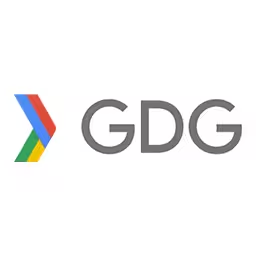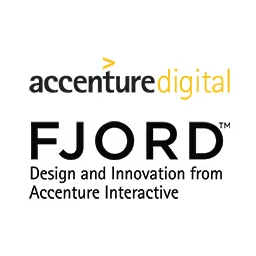Mike Monteiro

Mike Monteiro is the co-founder and design director of Mule Design. He prefers elegant, simple sites with clear language that serve a real need. He prefers that designers have strong spines. Mike writes and speaks frequently about the craft and business of design.
He loves client services so much he wrote two books on the topic, Design is a Job and You’re My Favorite Client, both from A Book Apart. Mike received the 2014 Net award for Conference Talk of the Year for his inspirational polemic on responsibility, “How Designers Destroyed the World.”
Talk: Let Us Now Praise Ordinary People
Everywhere you turn, companies are promising to change the world. But when the people already on top promise to change the world, you have to wonder how and for whom. The how isn't usually in your benefit, and the for whom isn't usually for you. The world is working exactly as they've designed it to work. So if we really want to change it, we need to change not just how we design it, but who is designing it.
Transcription
Mike Monteiro: My name is Mike Monteiro, and I’m a designer. Anybody else here a designer? Let me hear you.
Audience: Whoo!
Mike Monteiro: I am excited to be here today to talk to you about all of the wonderful, exciting things happening in design. The problem is there are so many interesting things happening in design right now that I had a little trouble making up my mind what to talk about. I thought, maybe we could talk about design thinking. Design thinking is exciting. And then I remembered it doesn’t really mean anything.
Audience: [Laughter and cheers.]
Mike Monteiro: And then I thought maybe we could talk about the difference between UX and UI, except I remembered I don’t know the fuck that is and neither do you. And then I thought, okay, well, let’s talk about brands. Everybody loves brands.
The other day I saw a designer on Twitter mention that the GOP, that’s the Republican Party in America, needs a rebranding. This is like saying that diarrhea has an image problem.
Audience: [Laughter and cheers.]
Mike Monteiro: I got my Ed McMcMahon over here. This is great. Ultimately, though, I decided I wanted to talk about something else entirely. Let’s talk about Greenland. It’s funny because some time in the next 40 years Greenland is going to melt causing the world’s oceans to rise by at least six meters. But the United States, where I’m from, in its infinite wisdom, came up with a plan to spare its citizens from that upcoming disaster. We’re just going to shoot everyone. Yeah, and I think we’re on target to do that before Greenland becomes a problem. In fact, the United States might cease to exist tonight. I’m so excited.
Audience: [Laughter and cheers.]
Mike Monteiro: Sooner on the horizon, tonight in fact, we’re doing our very best to violate our most sacred trust with the world and turning our backs on the very people who built that country. And then there’s this testicle wart on American consciousness. This is what it looks like when an entire country gets herpes.
Or some time, some time in the next few years, Facebook may have just accidentally released everyone’s private information into the public sphere. I think that’s funny too. Or Silicon Valley may just lobby congress to make women illegal, in which case nothing that I have to say to you today will matter.
So the fact that I’m standing up here talking and that you’re sitting down there listening is either the most stupid or the most hopeful act I can imagine or a little bit of both. Either way, all of that stuff may happen. It may not happen. But it’s definitely in the realm of the possible, probably in the realm of the probable, and it’s happening because we didn’t do what we needed to do to stop it.
More than that, everything that’s happening right now is happening because this is how we designed the world. We designed the combustion engine that led to global warming. We designed the guns that kill schoolchildren. We designed the shitty interfaces that don’t protect our private information that’s getting gay kids killed. We designed the religions that pit us all against one another. We designed the borders that lead to so much war. And we designed the ballots that mis-elect presidents that lead to so much shit.
Either by action or by inaction, through fault or ignorance, we have designed the world to behave exactly as it’s behaving right now. These are our chickens coming home to roost. The world is the way it is right now and it is a fucking garbage fire because we let ourselves design it that way. But on the very slimmest of margins, the very slimmest that we manage to survive the current garbage fire state of the world, this might be a good time to ask ourselves how we got here, what our role was in getting here, and what our role can be in making sure we don’t get here again.
Now, a lot of you are designers. I’m a designer. I love being a designer. And most days this is a pretty humble craft that we practice. It’s not unlike being a cobbler. You know people come to you. They have a hole in their shoe. You fix the hole in their shoe. They walk away happy.
And then, every once in a while, there’s those rare days where you get to feel like a superhero. You designed something that helps autistic kids learn how to read. Or you design a site that helps to collect money for clean water somewhere in the world that doesn’t have any. Or you design something that helps to save bird habitats, or you get to work with an amazing organization like Wikipedia, which I’ve been doing. Those, those are great days.
And because there’s so few and so far between, you treasure them because you realize that your work had an impact on those days. You realize that because of something you had a hand in – and it may have been a very small hand, like a Donald Trump sized hand – because you had a part in it, somebody, and it’s probably going to be somebody that you will never meet, had a better day. And then, then you get greedy because those days when you get to have an impact, those days feel so good that you want to have more of them, so you start looking for bigger problems to solve.
And you start wondering if a designer can be more than a cobbler in a workshop fixing holes in shoes. You start wondering things like, well, what exactly is causing those holes in those shoes? You start wondering if the problem isn’t the shoes, but the roads that people have to walk down. Or you start wondering why some people have to walk around so much. Or you start wondering why some people are getting the same pair of shoes resoled week after week after week while some other people manage to have a new pair of shoes almost every week.
And you start wondering about the context in which you do your work, and who you’re doing it for, and who you’re doing it to, and how that work that you’re doing is affecting the world that you’re living in. You develop. You end up developing an awareness to context. And eventually you develop an understanding that everything in the world is designed to work a certain way. And because you’re a problem solver, you look at the world around you and you see so many problems to solve. And you start wondering if you can fix those problems. And if you start looking really closely, you might even see your own fingertips on some of those problems.
And this, my dear, beloved designers, and I love you all, some a little more than others, is when designers start wondering if they can change the world. Holy shit. And that’s great because changing the world is so hot right now.
So the current environment in tech in San Francisco where I live, you can’t throw a stick without somebody saying they’re changing the world. Come to Uber; change the world. Come work at Twitter and change the world. Come work at Airbnb; change the world. Come work at Zenefits; change the world. I’m sorry. That’s gone. At this point you would be a fool to take a job some place that wasn’t promising to change the world in some amazing way.
I got curious, so I went to SlideShare and I did a search for “change the world.” Yeah, 2,950,483 results, including some of these amazing gems.
- How to change the world, and I quote, Galileo, Galilei, Mother Theresa, Bill Gates, Larry Page. This was his Zenefits recruitment deck, by the way, for HR.
- But can anybody change the world? No, just conversation managers, whatever the fuck they are.
- And it turns out the reason it’s easier to change the world now than it used to be is because we have presentations to help with this, so great.
- And if you really want to change the world, I guess some people are still on the fence about this.
- Oh, revolution. This looks promising. I wonder. Oh, analytics. Great.
- 5.5 easy steps. Here’s a tip: If you want to change the world, settle on the amount of fucking steps. It’s either five or it’s six. But if you come rolling in with 5.5, I’m going to start thinking you don’t have your shit together.
- My personal favorite: Apparently we can just come to the EU and have cocktails.
- This one is kind enough to tell me how we can change the world, but I’m pretty sure we have this covered.
- And I’m pretty sure that Gandhi would be psyched to be part of the killer presentation series.
- And, of course, once you introduce Gandhi, you know who is not too far behind. Yeah, there he is. This is, of course, an early draft. You want to go right to the dent in the universe deck.
- I’m actually okay with this one, especially if we combine it with cocktails in the EU.
- And finally, someone honest enough to tell you they don’t really know how to change the world. Here’s a tip though: Nobody who was ever afraid to say “fuck” has ever changed the world. Okay?
See, I make you laugh. Then I get you sad. Then I make you laugh a little bit. And then I get you really depressed. And then I tell you a dick joke.
So it turns out – have we talked about these people sitting here on the tables and how they seem to have a better seat than the rest of you? And how – I mean we’ve created a class system in the conference in, what, three hours?
Audience: [Laughter and cheers.]
Mike Monteiro: Marc’s going to kill me. So it turns out that this is a really good time to change the world, which is good because the world is fucked. But here’s another tip: When somebody tells you they want to change the world, there are two very important questions that you need to ask them – how and for who – because let me tell you the difference between modern Uber and yesterday’s Uber is pretty fucking negligible, and all this talk about Silicon Valley about changing the world is nothing new. The service economy is nothing new. And there’s nothing disruptive about rich people getting richer. It’s the same old bullshit that it’s always been.
So when the people at the top of the heap start talking about changing the world or disruption, you best believe they don’t want to change it too much because when you’re benefiting from how the world is designed, why the hell would you change it? So when the fine white gentlemen from Silicon Valley talk about changing the world, what they’re really saying is that they’d like to shift some money or some power from some other fine white gentlemen in Silicon Valley to themselves. They don’t want to change the world. They just want to redraw the boundaries of their own little gated community.
Millions versus billions is not class warfare. It’s a scuffle at a Palo Alto libertarian key party fuckipile because when those in power start talking about changing the world, I worry that they’ve found another way to squeeze just a little bit more out of those at the bottom and, ultimately, the only thing that’s getting disrupted is which particular set of working people are getting fucked because, again, the world is designed to work this way. So beware that you, with your desire to do good and to make the world a better place, don’t get sucked into the snake charmer’s tent. His “who” is not you, and his “how” is never in your favor.
So now that we’ve gotten our socialist bona fides out of the way, let’s go back to our original question: Can designers change the world? Well, of course you can - a little bit, a tiny bit, but not for the reasons you think.
Because I love you, I need to tell you something that might be a little hard to hear. You are not special. You have no unique properties. There is absolutely nothing about any of you that makes you different than anybody else. You are not a unique snowflake. And even if your #100days personal passion project is the most heartfelt thing you’ve ever done, I guarantee you there are ten million other people just like you - and that’s good news.
I don’t think design and designers can change the world because they’re special. I think designers can change the world because they’re not, because I think anyone can change the world, and because the world isn’t usually changed by special, unique, snowflakes and unicorns. The world is changed by ordinary people, ordinary people who take it upon themselves to take a stand because they’re trying to lead ordinary lives and something stupid gets in the way.
The world is changed by seamstresses who don’t want to give up their seat on the bus after a hard day of work. They’re just trying to get home. The world is changed by electricians just trying to earn a fair wage. The world is changed by girls who just want to go to school. The world is changed by kids who are upset about their bikes being stolen. The world is changed by people who just want to spend an evening dancing - dancing. The world is changed by people who don’t want to get shot by the people who are supposed to be protecting them. The world is generally changed by people who just want to live out their ordinary lives by people who are just trying to get home.
Teachers can change the world. All around the world, every day, they do this with little fanfare and little pay other than something inside them tells them that it’s the right thing to do. Doctors can and have changed the world. Journalists can have changed the world and, yes, designers can and have changed the world.
But it’s not because we’re especially capable of effecting change and improving the world around us. We’re no different than anybody else. We’re not special. We’re ordinary. And we live by the exact same social contract as every other human being on this planet. So yes, designers can change the world. But it’s because we have the same responsibility as everyone else. We can change the world because we don’t get to opt out of it. So the real question isn’t whether we can change the world, but how. I got you covered.
How to change the world, and in three easy steps - not two and a half, not three and a half, three. Step one – you might want to write these down. You’ve got to get ignorant. To change the world, you’ve got to get ignorant about your place in it. Bear with me here because I know it’s not making sense, but it will.
Let’s talk about empathy a little bit. Empathy is a wonderful life skill. It allows us to understand things from other people’s points of views, and it’s also how we double check that we’re not being assholes when we’re working and that our work isn’t falling into some ethical or moral black hole by attempting to see how it affects people who aren’t us. And as empathetic as we might be, we are hopefully aware that the world has worked out pretty well for us - a margin of error, but pretty well. After all, empathy is expensive, and it’s generally only available to people who have the time to feel it. Other people are just too busy surviving. And we have to admit that the world, as designed, works pretty much more or less in our favor.
But what if that wasn’t the case? What if you woke up one day and found yourself on the other end of the stick? Let’s get philosophical about it. There’s a philosophical concept that I want to talk to you about today – I know you’re excited about it – called the veil of ignorance. The veil of ignorance is a way of determining whether something you’re making sucks by allowing that you could end up on any side of it in any possible relationship to it. In other words, when you go screaming about building walls, you need to consider that walls have two sides. And maybe the rest of the world is happy to be protected from you.
Here’s Wikipedia’s excellent example: For a proposed society in which 50% of the population is kept in slavery, it follows that on entering the new society there is a 50% likelihood that a participant would be a slave. Get it? You can design a system that accepts slavery only if you also accept that upon entering it you’ve got a 50% chance that you might be a slave.
Imagine if you will that the leadership team at Airbnb, the fucks, woke up tomorrow as a lower class immigrant family being served an eviction notice because their landlord did the math and decided he could make more money by renting out their place as a short-term rental. You’d think at that point they might want to revisit some of the shit that they built and how they built it? I certainly hope so.
Or imagine that the teams that manage online harassment at any number of social networks woke up one day getting stalked or getting threatened and being contacted by former abusers. Imagine them having to go through the same harassment reporting flow that their users have to go through every day. You think at some point, you think at that point they’d want to change it? Certainly fucking hope so.
If any of these groups were given the chance to go back to their old lives for just a second, I guarantee you that they would design their products differently, and that’s what a veil of ignorance is all about. It’s about designing a system where you could end up at any end of the stick. It’s the single most important political and ethical concept in a designer’s toolbox. And when you’re designing something, you have to consider that. You have to consider that you could end up the person behind the curtain or in front of the curtain. And you have to ask yourself, am I okay with that? And if you’re not, change what you did.
Now in hindsight this is easy to say, right? But to do the right thing we need to think of these things beforehand just a little bit more fairly. How do we do that? Well, it turns out it’s actually not that hard, which brings us to step two.
To change the world you have to look like the world. Picture the following scenario. You’re downtown. You’re trying to get to an appointment, say a medical appointment, and your doctor’s office is in a part of town that isn’t serviced by a lot of cabs or public transportation. So you try to hail a cab, except, like I said, there aren’t a lot of cabs in that part of town. This is frustrating. You’re now worried about missing your appointment.
Now we could solve this problem by putting more cars on the street and say, hey, we could turn private citizens into drivers. You’ve not only solved the dearth of cabs problem, but you’ve found a way for people to make a little extra scratch, possibly even earning a living by driving other people around. All you need to do is connect the people who need the rides to the people who offer the rides, and that’s actually the easy part.
Now by all accounts this sounds like a pretty good idea. You found a problem. You came up with a reasonable solution. You met demand with supply. You found a way for people to earn a living, including yourself, hopefully. Certainly there’s going to be some hurdles along the way, but you can probably get through those. But there’s nothing – there’s nothing ethically wrong with this idea.
Now obviously we’ve talking about these ass-hats. This is a massive success story by any accounting and also a company that’s been vilified by thousands of people, justifiably so. A company that seems to be constantly at odds with the cities that they try to do business in. And a company with numerous cases of safety issues, harassment of customers, inadequate customer service, hiring people who should not be putting strangers in their cars, and a company with a leadership team that spends an inordinate amount of time with their feet in their mouths, which is doubly impressive when you consider that they’re heads are up their ass.
So how do these ideas, which start out helpful and by all measure ethically sound, how do they turn into companies with the ethical charm of a decapitated horse head bleeding on your satin sheets? It’s easy. All you have to do is introduce people. They’ll fuck up any situation. Even easier, you only introduce people who have the same life experiences as each other - a very narrow set of life experiences. You hire designers who all went to the same school, celebrate the same holidays, all look like each other. In other words, white boys solving problems for white boys. Look at these diverse mother fuckers.
They’ve never been harassed, so it doesn’t even occur to them that that’s a problem you have to solve for. And if they do, they don’t solve it from a place of experience. They’ve never had a cab refuse to stop for them, so they don’t think of solving for that problem. They’ve never been assaulted, so they don’t think of solving for that problem. And it’s too easy to think that these terrible things don’t happen as often as they actually do. But trust me, and trust the people around you who are telling you these things, they do happen that often. It’s shameful. And we owe it. We owe it to the people that we are designing these things for to build our teams to look like those people.
Don’t assume how a woman would behave in a situation. Hire a woman to design it. Don’t assume how a black person or an LGBT – or someone from the LGBT community would behave in a certain situation. Hire them to design it. Empathy is not enough. We need inclusion.
And the point isn’t that any particular experience or classification makes you a better designer. People are just more informed about themselves than they are about others. And for now, and this may be a shock to some of you, the vast majority of people in tech are white males. I know. It’s shocking.
Now I’m a pretty big fan of this guy, Michael Moore and his great big socialist heart, but he’s wrong. He’s wrong on this one. We are not all Muslim. We can empathize. We can pretend. We can hold up signs in front of Trump Tower. But at the end of the day, Michael Moore is going to go home. Michael Moore is not going to have a presidential candidate threatening to kick him out of his own country. This is cosplay. This is not real life.
And America is not a melting pot. I grew up hearing that phrase. I hated that phrase. We are a thousand cultures, all of them attempting to live together, hopefully in harmony, but these days holy shit, not so much. But it’s those differences that make my country what it is. It’s those differences that we need to celebrate. It’s those differences that make us capable of doing the things that we’ve done.
And as the products and services that we build get more and more enmeshed in the weird ass, complicated, social fabric that we design things for, the more our teams need to reflect those differences in that population. A diverse team isn’t just about the diversity of race or gender. It’s about the diversity of experiences, the diversity of needs, the diversity of thinking and, ultimately, the diversity of solutions. Our diversity is our strength, and we are idiots for not leveraging it. And don’t look at me like this is just America’s problem.
Step three: To change the world, you have to design the right thing. Let me give you an example. I had a professor in school, in design school, who went on and on about how well the AK-47 was designed. He stressed that, as designers, we should be able to appreciate an object’s design on a purely esthetic level. Fuck him.
But let’s look at the argument that he was making. Now, the AK-47 is often cited as a well designed object. And this case is usually made by pointing out that the AK-47 is easy to use, maintain, take apart, modify, manufacture. It’s a model of simplicity. Any of us would be proud to design something with that kind of legacy: ease of use, ease of manufacturing, adaptability, simplicity. Aren’t these the cornerstones of good design? If a client described your work back to you that way, wouldn’t you be thrilled?
But while somebody can make the case that the AK-47 or any other kind of riffle is designed, nothing whose primary purpose is to kill, to take a life can be said to be designed well. And that attempting to separate an object from its function in order to appreciate it for purely aesthetic reasons or to be impressed by its minimal elegance is a coward’s way of justifying the death that they’ve brought into the world and the money with which they’re lining their pockets.
So what’s the designer’s role in this? Design is an ethical trade and, yes, it’s a trade done for money. But we have a choice in how we make that money. A designer possesses a set of skills necessary to get something made and needs to properly assess how they are putting those skills to use. Your role as a designer is to leave the world in a better state than you found it. You have a responsibility to design work that moves the world forward and helps us as a species to not only enjoy our time on earth, but to evolve.
Now obviously that’s an American wedding. Fuck me. I may not go back.
Now obviously firearm design is an extreme example of this, and I doubt many of you will go on to become firearms designers, and fuck any of you that do. But many of us are asked to design things that have the potential of causing harm to the people who come in contact with our work. Let me give you an example of how close to home this is.
Do you guys remember this earlier this summer? Micah Johnson got an AK-47 off of Facebook. This is Micah Johnson who shot like five cops in Dallas. Now when this first came out, I went and looked for an AK-47 on Facebook. I wanted to see how easy it was to actually do that. It took me about ten seconds to find this. There it is, so I reported it. I reported it to Facebook. An hour later, I got this. That’s cool.
Earlier this year, because of things like this, me and a group of friends who have been growing over time decided that we wanted to find these guns on Facebook. You see, back in January, Mark Zukerberg made a big stink, had a big press release, called the media together and said, “Ooh, guess what. Facebook is not allowing guns any more.” And I thought, oh, that’s fantastic. That’s great. They’re taking a stand on that. Unbelievable. Good for you. No more peer-to-peer gun sales on the site.
The problem is they put absolutely no effort behind it. They relied, in their own words, on users to police the site for them and, to date, we have reported about 30,000 guns that we have found on Facebook and gotten about 10,000 of them removed. And we did this one gun at a time following a pain in the ass reporting flow that requires about four or five clicks to get through, a flow, which I believe I’ve seen about five different versions of because it’s randomized to make things harder for you.
Let me show you. Here you found a gun for sale, so you click that little thing up top, and you want to report the post. And this comes up: “What’s going on? It’s annoying or not interesting. I think it shouldn’t be on Facebook. It’s spam.” Which one would you click?
Audience: (Indiscernible)
Mike Monteiro: What?
Audience: (Indiscernible)
Mike Monteiro: It’s actually the second one, but you see where I’m going with this, right? I need a button that says, “Hey, it’s a gun.” So you click that second one, and then you get this. “What’s wrong with this? It’s rude, vulgar, or uses bad language. It’s sexually explicit. It’s harassment or hate speech. It’s threatening, violent, or suicidal. It’s something else.” Come on. Where’s the gun. Find the gun. “It’s something else.”
And then you get this. “It describes buying or selling drugs, guns, or adult products.” Wow. No judgment there in that one. That’s a nice collection of things. And, “I think it’s an authorized use of my intellectual property.” Well, those two seem to balance out pretty well.
So I’m going to go with drugs, guns, or adult products, and then you get this. Submit to Facebook for review. Blah-da-da. Turn that in. And then you get that, which says, “No, it’s good, actually. We’re fine with it. Leave that up.”
Now how many people here design UIs for a living? All right. You can tell when somebody doesn’t want something to happen, right? You know that when you go to Amazon and you’re thinking of buying something and just thinking about it, it’s already in a box. It’s being shipped to your house. It’s halfway there and, the minute you hit buy, your doorbell rings. What? We know how to create flows to make things happen. This is what you call a dark pattern. This is a flow to keep you from actually doing the thing that we told you we wanted you to do.
So to the design – then there’s this. This is great. So to the designers of Facebook, if there are any of you here today, is this who you are? Is this how you want to be remembered? Because these things are going out with your name on them. You are enabling this because when you have an opportunity to stop something and you opt out of it when a machine becomes so onerous, you need to act.
Your job is to act. Your job as a designer is to keep things like this from happening. And if you don’t have the stomach for that, you’re in the wrong game because people are counting on you to do this job right, and you are letting them down. And there comes a time when the machine becomes so onerous that you have to throw your body on the gears to make it stop. And that time has come.
How many of you will work on privacy settings for a large social network at some point? Are you going to think of how those settings affect the people who interact with them? How many of you are going to design interfaces for drop cams? How many of you are going to design things that go in self-driving cars? Holy shit. It’s bad design decisions plus 2,000 pounds of steel.
How many of us are going to consider people’s safety as we design those things and when we see it as our responsibility to make sure that the products we’re designing are as safe as possible? And if we come to the conclusion that these products cannot be made safe, how many of us will see it as our responsibility to raise our hands and say, “I am not making this”? Because if we truly want to change the world, we have to change how we’ve designed it. We have to change how we approach design, what we design, how we design. We have to change who gets to design.
We have some serious problems ahead of us, and we need to prioritize which ones of those we’re going to solve. Greenland is melting. Children are being gunned down in schools. A great mass of stateless people are winding their way through Europe, dying as they go. Migration is a fucking human right, by the way.
Audience: [Applause]
Mike Monteiro: And it is my great shame that my own country, a country that was built with the sweat and blood of immigrants like my own parents have turned its back on these people. We are building walls when we should be building bridges to the future. So, no, you’re not special. You’re ordinary. And it’s because you’re ordinary that you don’t get to opt out.
So when you go back to work on Monday, I want you to hang up a map of Greenland on your wall. And I want you to look at it every time you’re deciding how to spend your time, how to spend what precious little time you have on this earth. And I want you to make that decision not as a capitalist, not as a socialist, not as a German or an American, not as a Republican or as a Democrat, not as a designer, and most definitely not as a consumer. I want you to remember that you are a free people, free to choose how to spend the time that you have on this earth, and I implore you to use that time in the interest of making others free. If you want to change how the world is designed, you have to change not just how we’re designing it, but who’s designing it.
I want you to remember that you are lucky people. You are lucky that the world was designed more or less in your favor and that luck carries with it the responsibility to help others who weren’t so lucky. But most of all, I want you to remember that you are ordinary people bound by the same social contract as every other human on this planet and that our job is to elevate and help each other. And I wish you all the most ordinary of lives. Thank you.
[Music Played]












